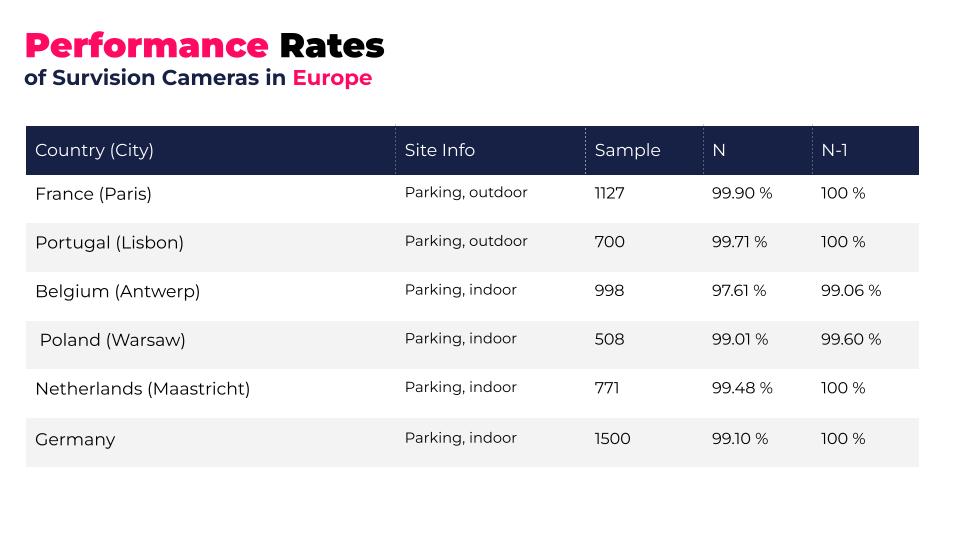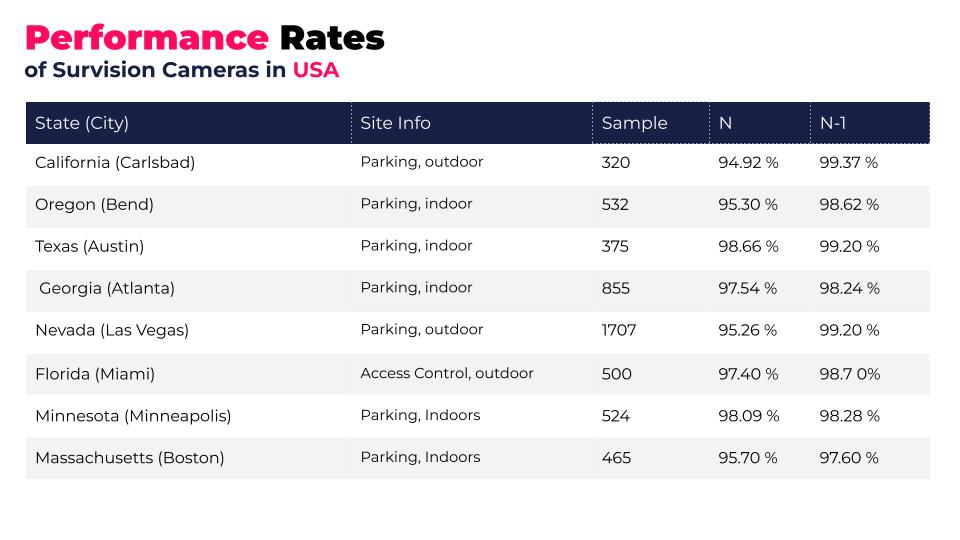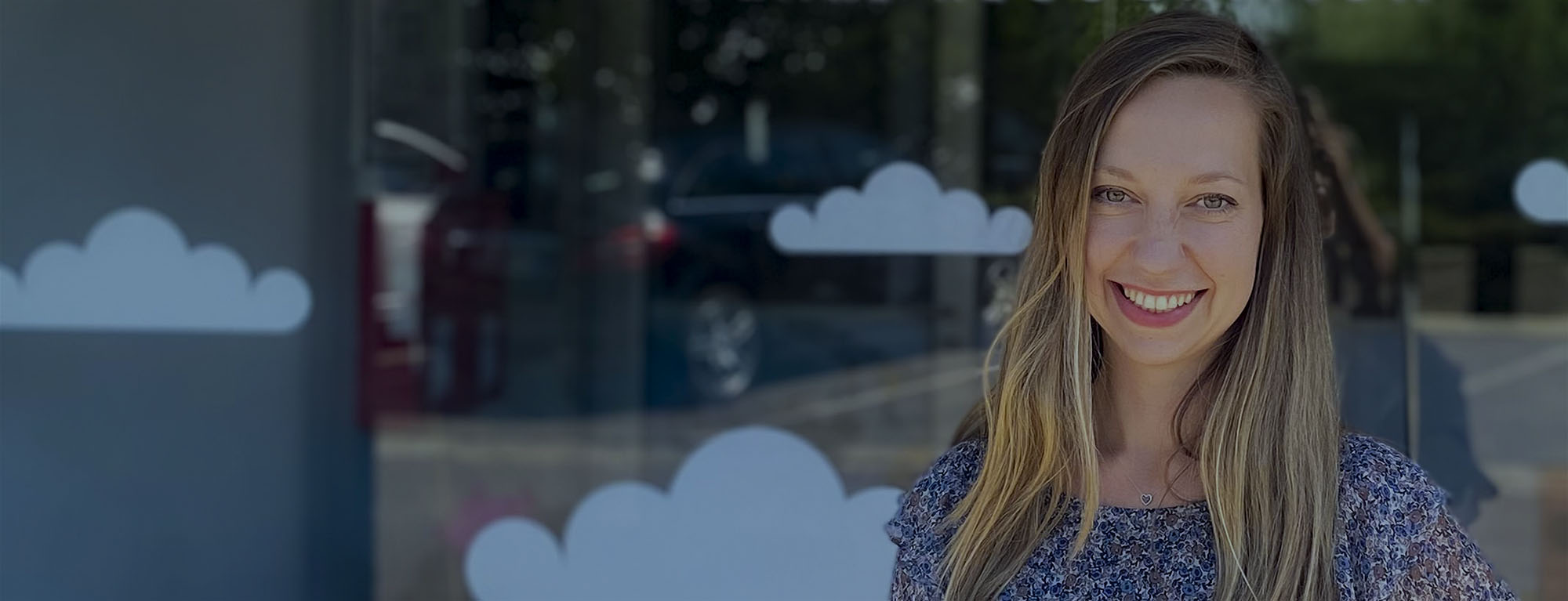

Let’s be accurate about LPR accuracy
Most LPR providers talk about 99%+ Accuracy level but we all know this is not so easy
First, what does “LPR Accuracy” mean?
Accuracy level in license plate recognition (LPR) refers to the percentage of correctly recognized license plates out of the total number of license plates captured by the system.
In LPR, high accuracy is essential to ensure the lowest levels of errors and false readings, which could lead to incorrect information, customer complaints, higher operational costs and potential legal issues.
However, 100% accuracy is a goal worth reaching since every millimetric advance in this field represents many benefits and savings for operators and integrators.
Not an easy feat
LPR accuracy level is impacted by an extensive list of very different factors, such as lighting conditions, camera angle and position, font type and size, the distance between the camera and the license plate, Environmental factors and, of course, camera quality.
The 100% accuracy goal is blurred by conditions that make the license plate total surface visually unavailable, for example:
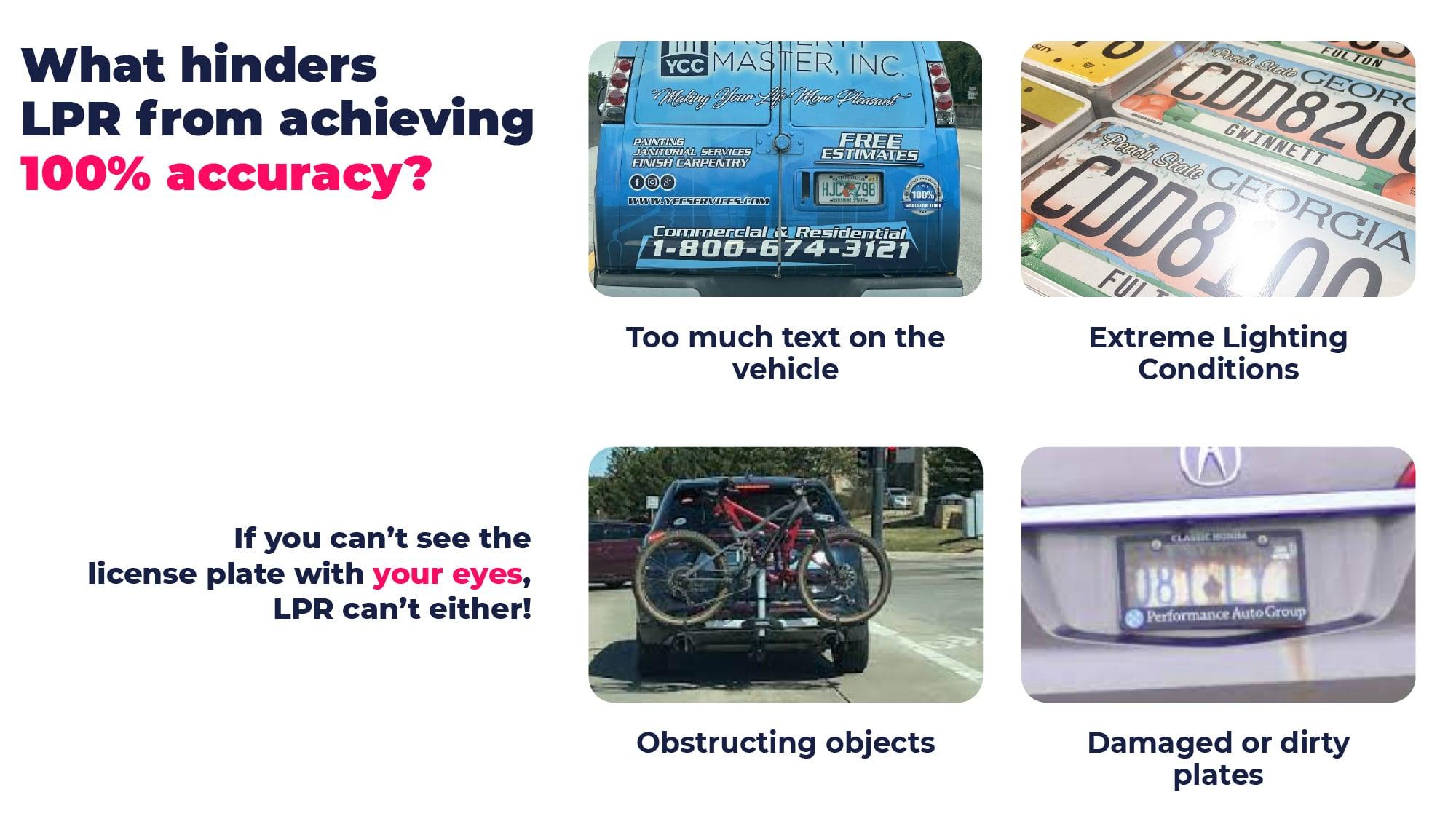
Obstruction: Whenever the license plate is damaged, broken, dirty, obscured, glared or obstructed by a foreign object, it will be impossible to read.
Excessive graphics around the plate make it impossible for the LPR system to determine which graphics belong to the license plate and which graphics do not.
Many of these factors are not equipment-related but circumstantial/installation-related, impossible to predict or cover; that is why it is very complex to talk about accuracy level as a feature of the camera itself.
Despite these difficulties, LPR’s great attractiveness and convenience made operators –not wait- for the 100% accuracy mark as they discovered (many) cases where LPR worked OK even if not all characters (N) have been correctly read; indeed, most of the projects consider validating plates on N-1 (allowing one missing character) or even N-2.
They called it “Fuzzy Logic”, a probabilistic workaround that made LPR useful even when not 100% accurate. Fuzzy Logic approach created “accuracy categories” where N is the top level (more strict and won’t accept less than 100% of the characters reading), and N-1 is a secondary level, appropriate for many, useless for others.
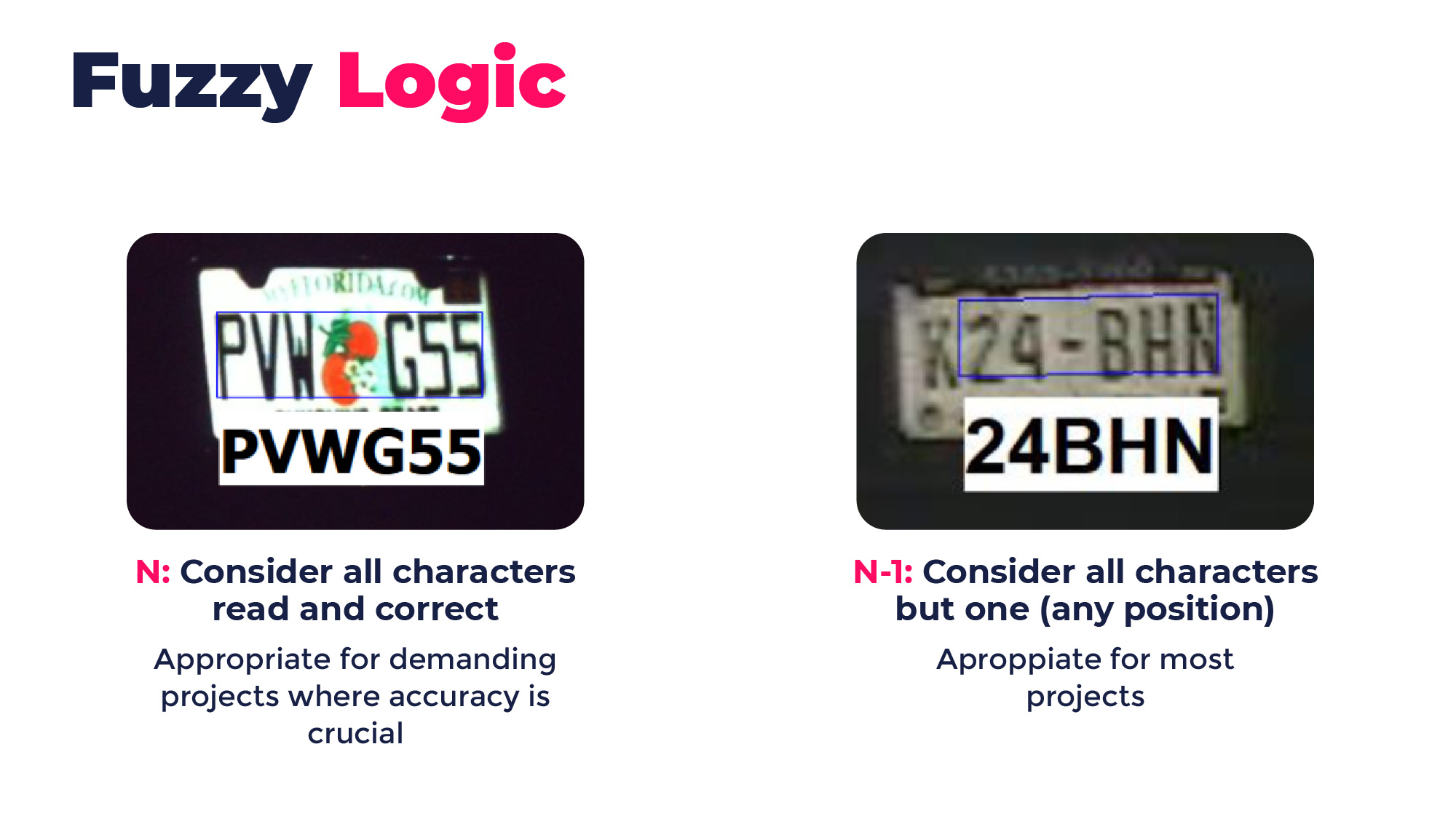
Under this approach, it is possible to have different performance profiles on different categories (N, N-1, N-2, etc).
As you can see, far from being a simple number, LPR accuracy is a complex matter, which is why we don’t talk lightly about it and never mention any number in our sales pitch; however, this is a core issue and we have a lot to say about it.
This is why we decided to share our accuracy scores on real case scenarios, including location, sample size, time of the day, N and N-1 values.
These values (Europe and USA) come from real sites. Each installation can provide different values depending on many factors.
LPR Cameras In depth
Different types of LPR cameras with specific capabilities for multiple scenarios with different requirements such as ticketless parking, tolling, access control, street surveillance and smart cities
Picopak
The world’s smallest LPR camera for security and on-street parking control
Micropak
High performance LPR camera for the most challenging sites such as very short distances and open angles
Nanopak
More affordable, smaller yet very fast and precise LPR camera, ideal for barrier or totem embedding
Visipak
Ideal for ITS and Tolling, this powerful camera works at large distances and very high speeds
Citypak
Compact and affordable LPR camera with 4G connection, designed for Smart city
What makes them Advanced?
Thanks to Ad-Hoc hardware and firmware, LPR Cameras are specifically designed to locate, read and digitalize license plates in complex conditions where other equipment fails
Supervision Dashboard
Human/Software Supervision tool that certifies installation and monitors performance
No LPR Server Needed
LPR is performed in the LPR cameras firmware
No trigger needed
LPR cameras detect and process plates at vehicle speeds as high as 250 kph
All included
Lights, protection and connection are integrated into the LPR Cameras
Short & Fast!
The shortest LPR distance (from 5ft!) at the highest reading speed (20ms)
Performance Warranty
Contractual ensurance of performance or money refund
Advanced Support
Highly trained, dedicated teams for every project. Quotes in 24 hrs, shipping in 48
AI powered firmware
Neural networks are used to learn from every plate read and increase performance over time
One camera per lane
You do not need more than 1 Survision LPR camera to get LPR working

